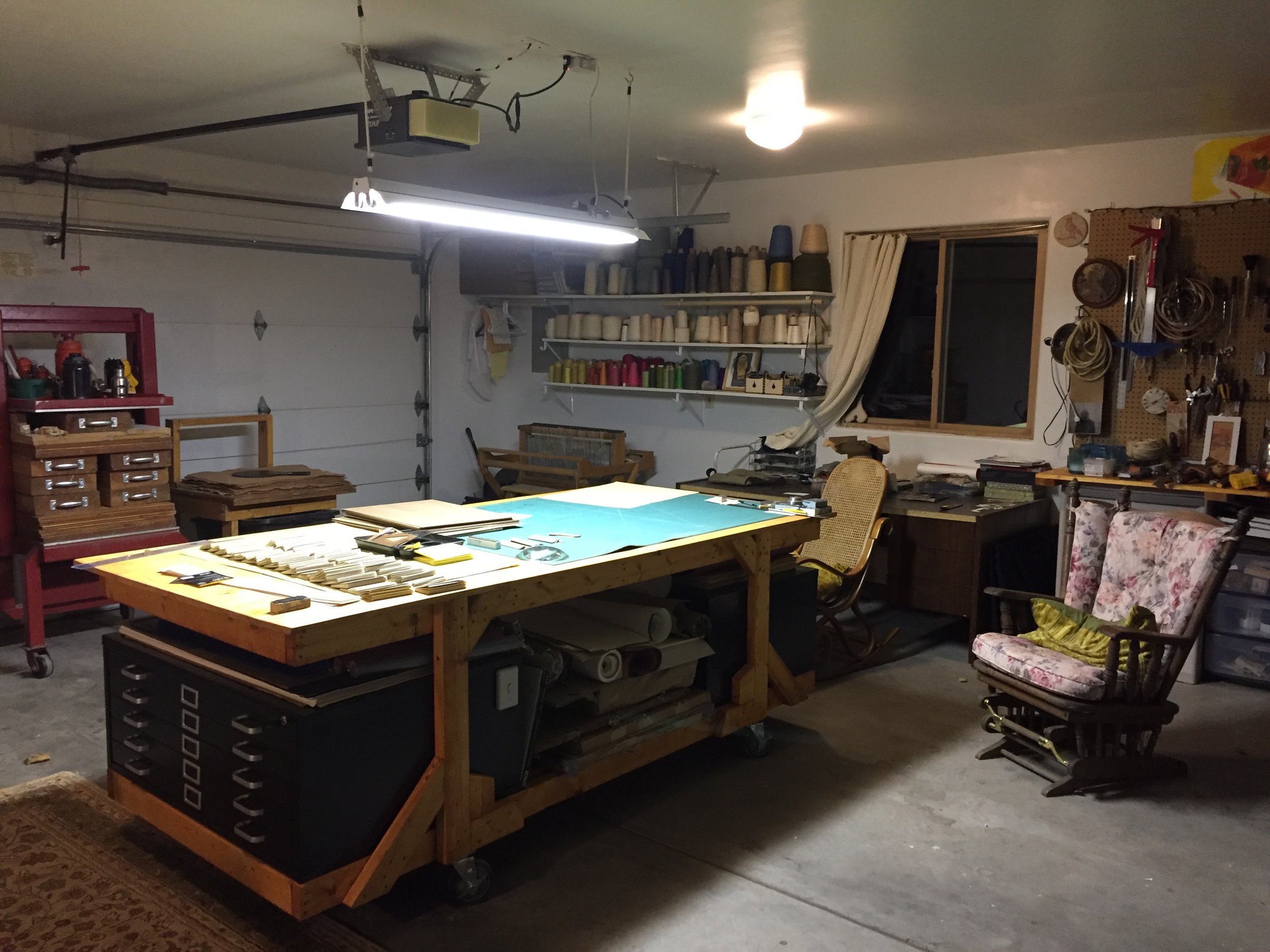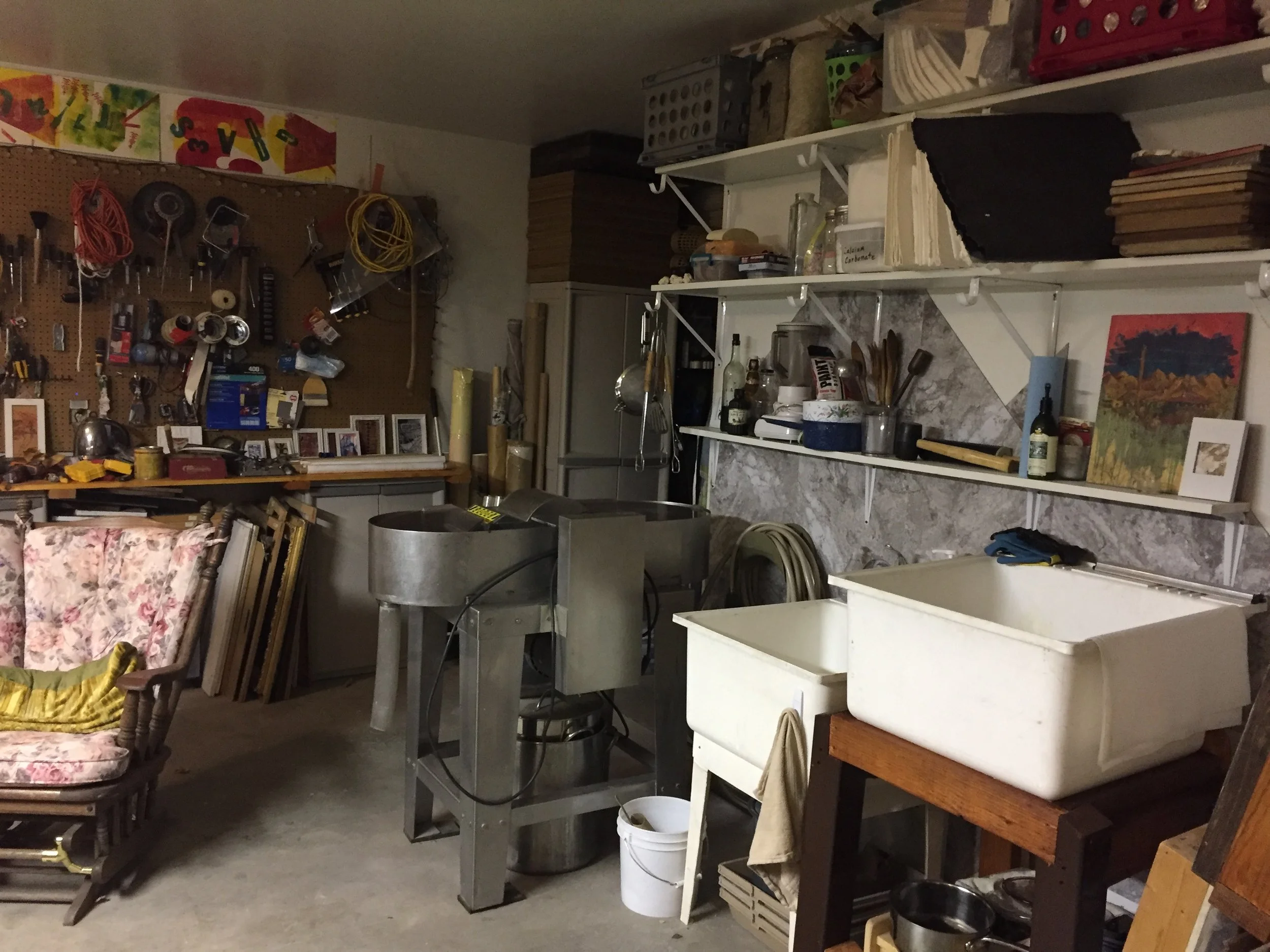Studio
My studio space migrates from the desk, to the mountains, to the river, to garage studio, to the garden. In the warm weather, I harvest local plants, cook them, beat in Hollander beater and make paper. During colder times, I am at my desk, drawing, making books, planning, sewing, spinning wool and dreaming. All the times in between, I am in the garden, observing patterns, chasing wild child, feeding chickens, collecting sticks or planting. I need the garden to grow and to make work. Being able to follow the cycles of life makes me an aware designer and artist. Ability to see patterns, navigate the edges and recognize networks helps me make sense of the world around. Having hands in the dirt lets me keep my head in the clouds.
Papermaking.
I have been making paper since 2008, when I first took a class at MCAD in Minneapolis with Bridget O’Malley from Cave Paper. I was forever smitten by the uncertainty, fragility, the wet mess and the intimate knowledge of plants. I have since done an internship at the Cave, worked as an assistant to several artists in exchange for access to studio equipment, travelled to workshops and dreamed day and night of having my own paper mill. In January 2016, Nomadic Circus Paper became a reality. I have a 2.2 lbs Reina beater, a hefty hydraulic press, a drying box and a collection of molds and deckles.
Book Arts.
Books were my first love. I remember checking out library books as a kid, secretly repairing and returning them, hoping someone would notice the improvements. As a graduate student, I worked at the Lilly Library of Rare Books and Manuscripts in the Conservations. My first task on the job was to look for book worms and bugs in Medieval bindings. I now teach Book Arts college level course as well as group and private workshops.
Books fascinate me because they are an extension of our collective memory. We write and make books to remember and to be remembered. Books are spaces for imagination— roads, room, closets and valleys. The craft of bookbinding makes me slow down and examine the physical properties of the materials I work with. I am very liberal with the choice of materials and don’t worry about archival qualities, unless it is a commission. I don’t think every artwork I make has to survive past my lifetime. Experimental bookbinding is a consuming and liberating process—design, experience and chance at work. The material dictates the process or technique, through making, the ideas for books, objects and installations crystalize.
Fiber.
Working with fiber started as an experiment for an alternative book cover material. I worked with felt to create soft, tactile covers. I am now learning how to spin wool and other fibers. Playing with natural fibers feeds my imagination, provides space for ritual and helps develop body memory of a craft.
Garden Arts.
.
Living in tune with the land and yourself is the ultimate art form. Sustainable cycles, seasons and natural abundance are an inspiration and common sense. Everything is connected. Growing and sustaining life is a way to be constantly aware of the web of connections—natural, personal and conceptual. My garden is my lab for growing plants for food, papermaking, dyes and pleasure.




